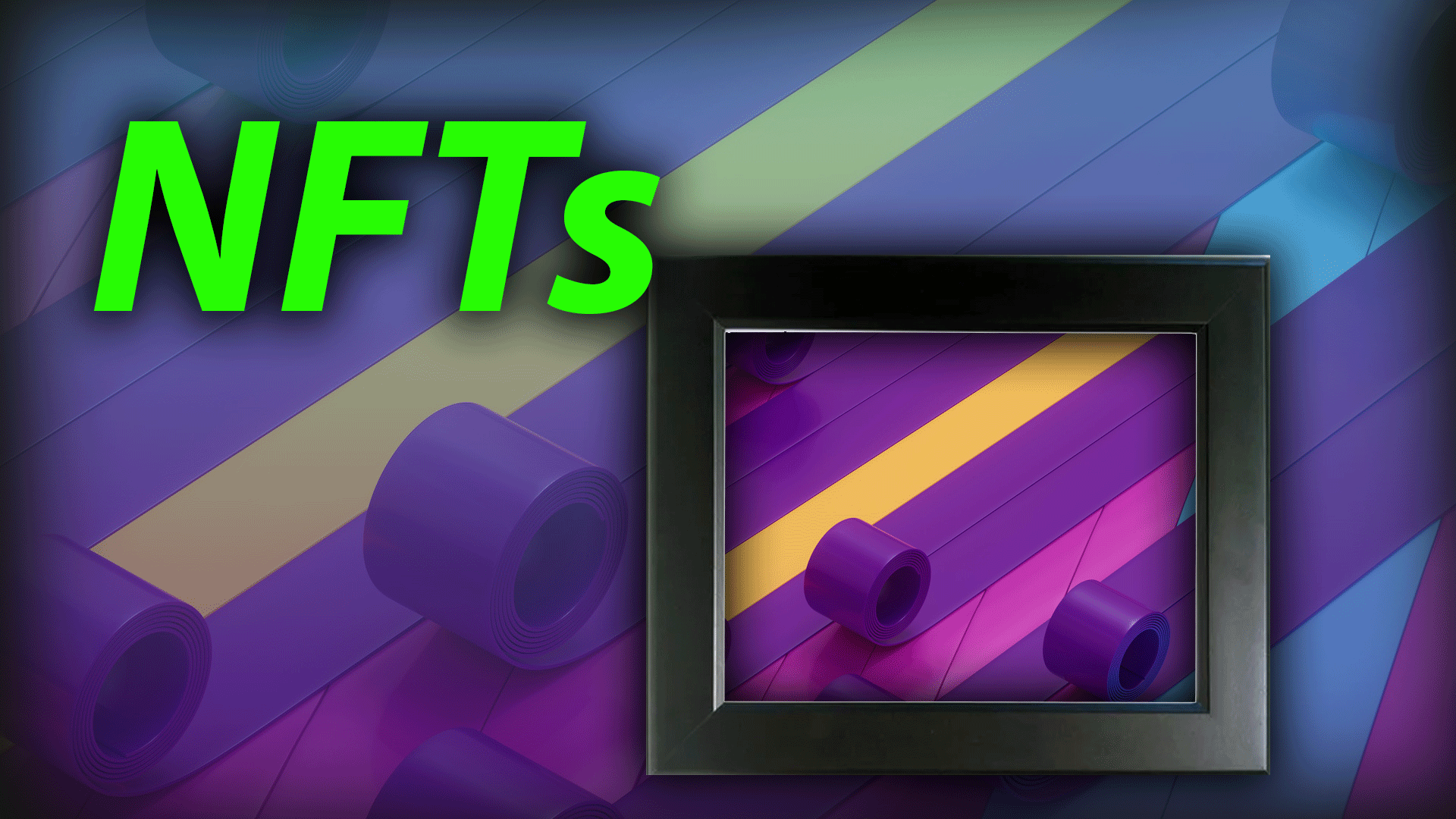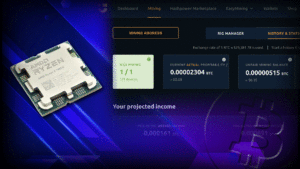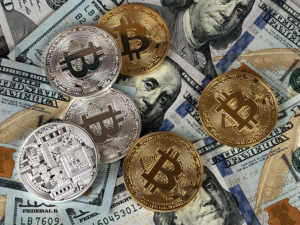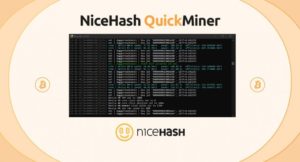Introduction
In the digital age, Non-Fungible Tokens, or NFTs, have emerged as a revolutionary concept that’s transforming the way we perceive and trade digital assets. This comprehensive guide aims to provide newcomers with a clear understanding of NFTs, from their basics to their impact on various industries.
NFTs, or Non-Fungible Tokens, have taken the digital world by storm. These unique digital assets have gained immense popularity, making headlines in the worlds of art, entertainment, and technology. For beginners and even some experienced users, the concept of NFTs may still seem shrouded in mystery. This guide is here to demystify NFTs, offering a comprehensive overview of what they are, how they work, and their broader implications.
What Are NFTs?
Before diving into the world of NFTs, let’s break down what these unique digital assets actually are and how they stand apart from cryptocurrencies like Bitcoin. NFTs are essentially digital certificates of ownership, representing ownership or proof of authenticity of a unique item, typically stored on a blockchain. Unlike cryptocurrencies such as Bitcoin, which are fungible and interchangeable, NFTs are non-fungible, meaning each one is unique and cannot be exchanged on a one-to-one basis.
NFTs derive their name from two key components: “Non-Fungible” and “Tokens.” “Non-fungible” means that each NFT is distinct and cannot be substituted for another NFT on a like-for-like basis. In contrast, cryptocurrencies like Bitcoin are fungible; one Bitcoin is interchangeable with another, much like traditional currencies.
The term “Tokens” refers to the digital representation of these unique assets. When you own an NFT, you possess a digital certificate of ownership that proves your exclusive rights to a specific digital or physical item. This certificate is securely stored on a blockchain, making it tamper-proof and easily verifiable.
How NFTs Work
To comprehend NFTs, it’s essential to grasp the technology underpinning them – blockchain – and how smart contracts ensure ownership and authenticity. Blockchains are decentralized digital ledgers that record transactions across a network of computers, providing transparency and security. Smart contracts are self-executing agreements that automatically enforce the terms and conditions of a transaction when predefined conditions are met.
Blockchain technology serves as the foundation of NFTs. These digital ledgers consist of a chain of blocks, each containing a record of transactions. What makes blockchains particularly powerful is their decentralized nature. Instead of relying on a central authority, such as a bank or government, blockchains are maintained by a network of nodes (computers) spread across the globe. This decentralized nature ensures the security and immutability of the data stored on the blockchain.
Smart contracts, another crucial component of NFTs, are self-executing agreements with the terms of the contract directly written into code. These contracts automatically execute actions when predetermined conditions are met. In the context of NFTs, smart contracts are responsible for managing the ownership and transfer of these unique tokens. When you purchase an NFT, the smart contract associated with it ensures that you gain ownership of the digital asset and that your ownership is securely recorded on the blockchain.
In essence, NFTs leverage blockchain technology and smart contracts to provide a secure and transparent way of proving ownership and authenticity of digital or physical items.
Use Cases of NFTs
NFTs have found their way into various industries, creating unique opportunities for creators and collectors. Let’s explore some prominent use cases:
Digital Art and Collectibles: NFTs have breathed new life into the world of digital art and collectibles. Artists can now tokenize their digital creations, making them easily tradable, provably scarce, and providing a new revenue stream. Digital artists are no longer constrained by the limitations of the physical art market; they can directly connect with a global audience and receive fair compensation for their work.
Music, Videos, and Other Media: Musicians, filmmakers, and content creators can tokenize their work, allowing fans to purchase and collect exclusive digital media. This introduces a novel way to reward artists and creators directly. Musicians can release limited edition albums as NFTs, filmmakers can tokenize rare scenes from their movies, and YouTubers can offer exclusive behind-the-scenes content to their NFT-holding fans.
Virtual Real Estate and Virtual Goods: In the realm of virtual worlds and games, NFTs enable the ownership of virtual real estate, in-game items, and assets. Gamers and virtual enthusiasts can buy, sell, and trade these assets securely. Virtual real estate markets have emerged within metaverse platforms like Decentraland and The Sandbox, where users can purchase and develop virtual properties, creating a new frontier for digital entrepreneurship.
NFTs have extended their reach far beyond digital art, offering innovative solutions for content creators, collectors, gamers, and virtual world enthusiasts. As the NFT ecosystem continues to grow, new use cases are continually being explored, further expanding the possibilities of this technology.
Buying and Owning NFTs
Ready to own your first NFT? This section will guide you through the steps, from setting up a digital wallet to making a secure purchase.
1. Creating a Digital Wallet: The first step in your NFT journey is to create a digital wallet. Think of it as your digital keychain for accessing and managing NFTs. There are various wallet options available, including web-based wallets, mobile wallets, and hardware wallets. Each has its advantages and security considerations. Web wallets are convenient but may be less secure than hardware wallets, which are physical devices designed specifically for storing cryptocurrencies and NFTs. Choose a wallet that aligns with your preferences and security needs.
2. Funding Your Wallet: Once you have your wallet set up, you’ll need to fund it with cryptocurrency. Most NFT transactions are conducted using cryptocurrencies like Ethereum (ETH). You can purchase ETH on popular cryptocurrency exchanges and then transfer it to your NFT wallet. Make sure to consider transaction fees and gas costs, as they can vary depending on network congestion.
3. Choosing an NFT Marketplace: NFTs are bought and sold on NFT marketplaces. Each marketplace may specialize in different types of NFTs or offer a unique user experience. Some of the most well-known NFT marketplaces include OpenSea, Rarible, and SuperRare. Explore these platforms, read user reviews, and consider the type of NFTs you’re interested in before selecting a marketplace.
4. Browsing and Purchasing NFTs: Once you’re on an NFT marketplace, you can start browsing the vast selection of NFTs. Each listing typically includes details about the item, including its name, description, price, and any associated royalties for the creator. When you find an NFT you’d like to purchase, click on it to view more details and initiate the buying process. Follow the prompts to complete the purchase, which often involves confirming the transaction and paying with your wallet.
5. Owning and Managing Your NFTs: After successfully purchasing an NFT, it will appear in your wallet. You now have ownership of the digital asset, and your ownership is recorded on the blockchain. You can view, sell, or transfer your NFT through your wallet or the marketplace interface. It’s essential
to keep your wallet’s private keys secure, as they grant access to your NFTs. Consider using hardware wallets or other security measures to protect your assets.
Navigating the process of buying and owning NFTs may seem daunting at first, but with the right tools and resources, it becomes a manageable and exciting endeavor. The key is to take your time, conduct thorough research, and ensure the security of your digital assets.
Creating NFTs
If you’re an artist or creator looking to enter the NFT space, here’s how you can turn your digital work into NFTs and manage your rights. Minting NFTs involves the process of converting your digital creation into a blockchain-based token.
1. Choose Your Platform: To mint NFTs, you’ll need to select a platform that supports NFT creation. Ethereum is the most commonly used blockchain for minting NFTs, but other blockchain networks like Binance Smart Chain (BSC) and Flow also offer NFT minting capabilities. Each platform may have its unique features and requirements, so choose one that aligns with your goals and audience.
2. Prepare Your Digital Artwork: Before minting an NFT, ensure that your digital artwork is in the desired format and meets the platform’s specifications. Common file formats for NFTs include JPEG, PNG, GIF, and MP4 for videos. Some platforms may have specific size and resolution requirements, so be sure to review their guidelines.
3. Set Metadata and Attributes: Metadata is crucial for describing your NFT and providing additional information to potential buyers. This information typically includes the title of your work, a description, and any relevant attributes. Attributes can be used to categorize your NFT, such as specifying whether it’s a one-of-a-kind piece or part of a limited edition.
4. Mint Your NFT: Minting an NFT involves creating a unique token on the blockchain that represents your digital artwork. This process typically requires a small fee, known as a gas fee, to cover the computational resources needed to complete the transaction. Once your NFT is minted, it will have its unique blockchain address and can be listed for sale on NFT marketplaces.
5. Set Royalties and Ownership Rights: NFT creators have the option to set royalties, allowing them to earn a percentage of the resale value whenever the NFT changes hands in the future. This feature provides ongoing revenue for creators and incentivizes them to continue producing valuable content. Additionally, creators can specify ownership rights and usage terms in the NFT’s smart contract.
6. List Your NFT for Sale: To make your NFT available to potential buyers, list it for sale on NFT marketplaces that support your chosen blockchain. You’ll need to specify the price, royalties, and any additional terms for the sale. Remember that listing fees and marketplace policies may vary, so familiarize yourself with the platform’s terms.
7. Promote Your NFT: After listing your NFT, consider promoting it through social media, art communities, and platforms dedicated to NFT enthusiasts. Building a presence and engaging with your audience can help attract potential buyers and collectors.
By following these steps, artists and creators can mint their digital works as NFTs and participate in the growing NFT ecosystem. It’s an empowering way to gain exposure, connect with a global audience, and monetize your creativity directly.
The Environmental Debate
As NFTs gain traction, questions about their environmental impact have arisen. We’ll explore the debate and eco-friendly solutions. Critics argue that the energy consumption associated with some blockchain networks is unsustainable, while proponents are working on greener alternatives.
The environmental debate surrounding NFTs centers on the energy consumption of blockchain networks, particularly Ethereum. Ethereum, the most popular blockchain for NFTs, relies on a consensus mechanism called Proof of Stake (PoS), which is more energy-efficient than the previously used Proof of Work (PoW). PoW blockchains, like Bitcoin, require significant computational power and electricity to validate transactions and create new blocks. This has led to concerns about the carbon footprint of such networks.
With the transition to PoS, Ethereum aims to reduce its energy consumption significantly. PoS relies on validators who lock up a certain amount of cryptocurrency as collateral to propose and validate blocks. Validators are rewarded based on their stake and the accuracy of their actions, rather than through energy-intensive mining.
However, not all NFTs are created on PoS blockchains, and some artists and collectors remain concerned about the energy impact of their chosen platforms. As a result, alternative blockchains, such as Flow and Tezos, have gained popularity for their environmentally friendly consensus mechanisms.
Eco-conscious individuals and organizations are actively exploring ways to reduce the environmental footprint of NFTs. Some initiatives focus on carbon offsetting, where a portion of the proceeds from NFT sales is allocated to environmental causes. Others are developing NFT marketplaces and platforms that operate on greener blockchains from the outset.
It’s crucial for NFT enthusiasts and participants to stay informed about the environmental implications of the blockchain networks they use and to support initiatives that promote sustainability within the NFT ecosystem. As technology evolves and blockchain networks become more energy-efficient, concerns about the environmental impact of NFTs may subside, allowing the industry to grow while minimizing its carbon footprint.
NFT Market Trends and Challenges
Like any emerging technology, NFTs face challenges and uncertainties. We’ll analyze the market trends and potential hurdles. Market volatility and speculation are common in the NFT space, and legal and copyright issues are yet to be fully resolved.
Market Volatility and Speculation: The NFT market has experienced significant volatility and speculation, with prices of NFTs skyrocketing and plummeting in short periods. While this volatility presents opportunities for traders and collectors, it also poses risks. Buyers should exercise caution and conduct thorough research before making NFT purchases. Moreover, creators should be mindful of the potential consequences of price fluctuations on their work’s perceived value.
Legal and Copyright Issues: The NFT space is grappling with legal and copyright challenges. Determining ownership rights, intellectual property rights, and royalties can be complex, especially when it comes to digital art and media. Creators and collectors should seek legal advice and establish clear terms and conditions to protect their interests. The resolution of these issues will shape the future of NFTs in the art and entertainment industries.
Evolving Regulations: Governments and regulatory bodies worldwide are closely monitoring the NFT space. The application of existing financial and tax regulations to NFT transactions is a topic of ongoing discussion. As the regulatory landscape evolves, NFT participants should stay informed about compliance requirements in their jurisdictions.
Scalability and Network Congestion: High demand for NFTs has at times led to network congestion and increased transaction fees on blockchain platforms. Scalability solutions, such as Ethereum 2.0, aim to address these challenges by improving network performance. Users should be aware of potential delays and fees associated with NFT transactions during peak periods.
Market Trends: Despite these challenges, NFTs continue to gain traction. Market trends suggest that NFTs are here to stay, with artists, musicians, athletes, and brands increasingly embracing this technology. As the NFT ecosystem matures, it is likely to witness innovations in areas like virtual reality, augmented reality, and tokenized real-world assets.
Navigating the NFT market
requires vigilance, adaptability, and a keen understanding of the evolving landscape. Participants should stay informed about market trends, regulatory developments, and best practices to make informed decisions in this dynamic space.
Famous NFT Sales
Some NFT sales have made headlines worldwide. Let’s take a look at the most famous NFT transactions and their cultural significance. Notable NFT auctions have included digital art, music albums, tweets, and even virtual real estate.
Beeple’s “Everydays: The First 5000 Days”: One of the most iconic NFT sales was the auction of digital artist Beeple’s artwork, titled “Everydays: The First 5000 Days,” on Christie’s auction house. The NFT sold for a staggering $69 million, propelling Beeple to international fame. This sale marked a historic moment for digital art and the NFT market, demonstrating that digital creations could achieve prices comparable to traditional art.
Jack Dorsey’s First Tweet: Twitter CEO Jack Dorsey’s first tweet, “just setting up my twttr,” was auctioned as an NFT on the platform Valuables by Cent. The tweet sold for $2.9 million, emphasizing the potential value of digital memorabilia and the ability to tokenize unique online content.
NBA Top Shot Moments: NBA Top Shot, an officially licensed NFT platform, allows users to buy, sell, and trade officially licensed NBA highlights. Rare moments from star players have sold for substantial sums, with some transactions reaching six figures. This demonstrates the market’s appetite for collectible sports content in NFT form.
Virtual Real Estate in Decentraland: Virtual real estate within the metaverse platform Decentraland has seen high-value transactions. Users have purchased virtual land parcels for substantial amounts, with the most sought-after locations commanding premium prices. This trend highlights the potential for virtual real estate development and investment in virtual worlds.
These famous NFT sales have not only set records but have also raised awareness about the value and significance of digital assets in the NFT ecosystem. They have showcased the diverse range of items that can be tokenized and traded, from digital art to cultural artifacts to virtual property.
Navigating the NFT Landscape
Now that we’ve covered the fundamentals and explored the multifaceted world of NFTs, it’s time to take your first steps with confidence. Navigating the NFT landscape can be an exciting and rewarding journey, whether you’re an artist, collector, or enthusiast.
To start your NFT journey, consider the following steps:
1. Educate Yourself: Continuously educate yourself about NFTs, blockchain technology, and the latest developments in the NFT space. Staying informed will help you make informed decisions and navigate the rapidly evolving landscape.
2. Define Your Goals: Determine your objectives for entering the NFT market. Are you looking to create NFTs as an artist, collect NFTs as a fan, or invest in NFTs as a digital asset? Clarifying your goals will guide your actions in the space.
3. Research Marketplaces: Explore various NFT marketplaces to find the one that aligns with your interests and needs. Each marketplace may cater to specific niches, so choose the platform that suits your preferences.
4. Secure Your Assets: Prioritize security by using reputable wallets, enabling two-factor authentication, and safeguarding your private keys. Security breaches can lead to loss of assets, so take necessary precautions.
5. Engage with the Community: Join NFT communities, forums, and social media groups to connect with fellow enthusiasts, artists, and collectors. Networking can provide valuable insights and opportunities.
6. Support Creators: If you’re an NFT collector, consider supporting your favorite artists and creators by purchasing their NFTs. Your support can empower creators to continue their work.
7. Stay Open to Innovation: The NFT space is dynamic, and new possibilities are constantly emerging. Stay open to innovation and explore how NFTs can be applied in creative and unique ways.
With an understanding of NFT basics and a proactive approach, you’ll be well-prepared to navigate the NFT landscape and discover the endless possibilities it offers.
FAQs About NFTs
Q1. Are NFTs only used for digital art?
A: No, NFTs have a wide range of applications beyond digital art. They can represent ownership or authenticity for various digital and physical items, including music, videos, virtual real estate, in-game items, and more. NFTs have expanded into diverse industries and continue to evolve.
Q2. How do I ensure the authenticity of an NFT I want to purchase?
A: Authenticity is guaranteed through blockchain technology and smart contracts. Each NFT has a unique blockchain address and a transparent transaction history, ensuring you can verify its authenticity. Additionally, reputable NFT marketplaces often verify the authenticity of the items they list.
Q3. Are NFTs a good investment?
A: NFTs can be speculative, and their value can fluctuate significantly. It’s essential to do thorough research and understand the market dynamics before investing in NFTs. While some NFTs have appreciated in value, others have not, so approach NFT investment with caution and a long-term perspective.
Q4. How do I sell an NFT I own?
A: Selling an NFT typically involves listing it on an NFT marketplace, setting a price, and waiting for a buyer. The process may vary slightly depending on the platform you choose. Be prepared to pay transaction fees when listing and selling your NFT. Additionally, consider promoting your NFT to attract potential buyers.
Q5. What’s the future of NFTs?
A: The future of NFTs is still evolving, but they are likely to continue influencing various industries, from art to gaming to entertainment. As technology advances and the market matures, new opportunities and challenges will arise. NFTs may play a role in virtual reality, augmented reality, and the tokenization of real-world assets, among other developments.
Q6. How can I protect my NFT assets from theft or loss?
A: To protect your NFT assets, follow these best practices:
- Use a secure digital wallet with strong encryption.
- Enable two-factor authentication for wallet access.
- Keep your private keys offline and in a safe place.
- Be cautious of phishing attempts and only use official NFT marketplaces.
- Regularly update your wallet software and operating system for security patches.
Q7. Can I create NFTs if I’m not an artist or creator?
A: Yes, you can create NFTs even if you’re not an artist or creator. Some platforms allow users to tokenize their personal moments, messages, or other digital content as NFTs. Additionally, you can collaborate with artists or purchase existing NFTs to participate in the NFT ecosystem as a collector or investor.
Q8. What are the tax implications of buying and selling NFTs?
A: Tax regulations for NFTs vary by jurisdiction and can be complex. It’s advisable to consult with a tax professional who is knowledgeable about cryptocurrency and NFT taxation in your country. Keep records of your NFT transactions, including purchase prices and dates, as these details may be required
for tax reporting.
Q9. How can I learn more about NFTs and stay updated on the latest developments?
A: To learn more about NFTs and stay updated, consider the following:
- Explore NFT-focused websites and forums.
- Follow NFT influencers and experts on social media.
- Read books, articles, and whitepapers on NFTs and blockchain technology.
- Attend NFT-related events, conferences, and webinars.
- Engage in discussions with the NFT community to gain insights and share experiences.
Q10. Are there any ethical considerations when dealing with NFTs?
A: Yes, ethical considerations in the NFT space include environmental concerns related to blockchain energy consumption, copyright and intellectual property rights, and the impact of NFT purchases on marginalized communities. It’s essential for participants to be aware of these issues and make informed choices that align with their values.
In conclusion, NFTs offer a world of possibilities, from owning digital art to participating in virtual economies. However, navigating the NFT landscape requires knowledge, caution, and a commitment to ethical practices. Stay curious, stay informed, and explore the exciting future of non-fungible tokens. Happy exploring!




